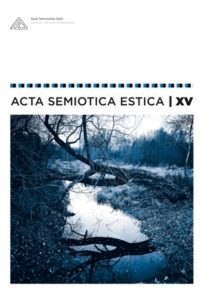Eesti võõrliikide tähendusväli: kujunemine ja linnaruumi kontekst
The meanings of alien species in Estonia: Formation and the context of urban space
Author(s): Tiit Remm, Riin MagnusSubject(s): Semiotics / Semiology, Policy, planning, forecast and speculation, Rural and urban sociology
Published by: Eesti Semiootika Selts
Keywords: alien species; urban landscaping; urban planning; semiotics of self and other;
Summary/Abstract: Alien species are characteristic to the era of anthropocene, reflecting the ubiquity of human influence. The formation of the “alien species” concept and its meanings in different contexts have always been tied to the cultural imagination about relations between nature and culture, but also with the (unexpected) activities of other species in a novel environment. In the current study, we analyse the formation of the meaning of alien species in Estonia and the relevance of the ecological alien species paradigm in the context of modern urban greenery. The development of the discourse of alien species was analysed on the basis of the articles about alien species in the journal Eesti Loodus (from 1958 to 2017). To analyse the relevance of the alien species topic in modern greenery, we made expert interviews with people, who have been practically or theoretically involved with the topic of urban greenery. Although the first critical articles about alien species were published in the 1960s in Eesti Loodus, a more comprehensive discussion of problems related to alien species takes place in the second half of 2000s. In urban greenery, the polarity “local species–alien species” is not of major significance today and may become relevant on some specific occasions only (e.g., the trees for honorary citizens) or in some concrete parts of the city. The interviews also revealed a discrepancy between the official and the cognitive idea of alien species – several species, which are perceived as one’s own, have been introduced here a couple of centuries ago and are hence alien species by definition. The interviews also pointed out other distinctions between self and other, which were considered to be more important in the context of urban greenery than the opposition between local species and non-native species. When applying the ecological alien species paradigm, the historical background of the meaning of species in a particular culture should hence be considered, as well as various distinctions between self and other that are specific to particular environments (e.g., cities).
Journal: Acta Semiotica Estica
- Issue Year: 2018
- Issue No: 15
- Page Range: 89-118
- Page Count: 30
- Language: Estonian

